2020 Mercedes-Benz GLC Review

The GLC and its predecessor, the GLK, have proven to be hugely successful for Mercedes.
It takes everything that’s loveable about the C-Class and puts it into a larger, more practical SUV format. For 2020, the GLC is getting a thorough refresh with a new engine, a better infotainment system, and a better ride. Be it the “coupe” version or the SUV, on or off the road, AMG or standard, the new GLC is getting a pretty nice upgrade.
For a car that competes in the hotly contested compact luxury crossover segment, the GLC has fared pretty well. Rivals to the GLC include the BMW X3, the Audi Q5, and the Volvo XC60, but the Mercedes has always been able to hold its own. If anything, the past GLC was a bit uninteresting to drive, erring on the side of luxury and comfort rather than engagement and sportiness.
This new refreshed model doubles down on that mindset, with more features and technology. It’s not a canyon carving crossover, but it has a few tricks up its sleeve to impress drivers and passengers.
Get the Flash Player to see this player.
FAST FACTS
| GLC 300: | |
| Engine: | 2.0-liter turbocharged four-cylinder |
| Output: | 255-hp, 273 lb-ft of torque |
| Transmission: | nine-speed automatic |
| Fuel Economy (MPG): | N/A |
| Expected Starting Price (USD): | $40,000 (SUV) $47,000 (Coupe) |
| GLC 63: | |
| Engine: | 4.0-liter turbocharged V8 |
| Output: | 503 hp, 516 lb-ft of torque |
| Transmission: | nine-speed multiclutch |
| Fuel Economy (MPG): | N/A |
| Expected Starting Price (USD): | $81,000 |
Wanting that Extra Voltage
During a test drive in Frankfurt, Germany, Mercedes showcased models with a new 48-volt electrical system. It’s a mild-hybrid powertrain, and Mercedes was noncommittal about whether this technology would make its way to North America. Other models in the Mercedes lineup are getting such technology, though paired to bigger, six-cylinder engines. The GLC has a new four-cylinder engine, but it makes total sense to sell the mild hybrid model here.
The motor makes 255 horsepower and 273 lb-ft of torque, respectable numbers that should help the little crossover hit highway speeds in about 6 seconds. The motor is paired to a nine-speed automatic and, depending on your market, you can get the GLC in either rear-wheel-drive or 4Matic all-wheel-drive. We drove the latter and found that the engine is extremely smooth, with plenty of passing speed and cruising capability. Only a few minor hiccups occurred with the transmission, where it slammed or switched into gear with a little coarseness.
Off-Roading
The engine should be more fuel efficient and features a smooth start/stop system. This was likely a byproduct of that new 48-volt system, which also allows the GLC to stand out in a few other ways. Thanks to that tech, the GLC can be equipped with an air suspension system, giving the GLC features that make it more credible off-road. The ground clearance with such a system raises to 9.6 inches (245 mm), and the GLC can ford a depth of just under 12 inches (300 mm) with ease. Furthermore, it has a 30.8-degree approach angle, 24.9-degree departure and 19.8-degrees break over angles.
See Also: Mercedes-Benz G-Class vs Jeep Wrangler
Having tested the 2020 GLC in an off-road park designed for motocross, it’s clear that Mercedes has done a lot to turn its soft-roader into a mini G-Wagen. Other features like a handy camera array, adaptive lighting that drops down to view the surface in front of the car, and downhill crawl control help the GLC make its case. It’s clear that this will definitely exceed the customer’s expectations. Most buyers are looking for a family-friendly car, but I guess Mercedes is targeting the Land Rover faithful here.
Again, this technology is only available on the 48-volt models, something that shouldn’t be hidden away in another market, like Mercedes might be planning. Off-roadability will help those who see seasonable weather like snow, or want to explore the great outdoors, a demographic that is currently targeted by more and more automakers (see the new Honda Passport, as well as the entire Subaru, Jeep, and Land Rover brands).
See Also: 2020 Mercedes-Benz EQC Review
But if that tech doesn’t come to our shores, the on-road driving experience should still be solid thanks to an adaptive suspension that keeps things soft, just not as cushiony as an air suspension could. The steering is good, if numb, with light steering at low speeds and heavier steering at higher speeds, making it ideal for the daily commute. Obviously, the suspension and steering feel changes if you opt for a new Mercedes-AMG GLC 63 S, which can get very stiff and engaging feeling.
An AMG Sidenote
Speaking of the AMG, this is a completely hilarious car with plenty of power and performance on tap. Under the hood of the AMG are 4.0-liter turbocharged V8s that make 503 horsepower and 516 lb-ft of torque. It’s paired to a nine-speed multi-clutch transmission, something that is somewhat finicky at times, with a little bit of hesitation or laziness as it sorts out what to do with so much power. The power gets sent to all four wheels through the 4Matic+ all-wheel-drive system, which can even send all the power to either axle. There’s also a locking rear differential to ensure the power gets distributed properly and usefully, as maintaining traction with that much power is important.
See Also: Top 10 Surprising Cars That Are Slower Than The Mercedes GLC 63
The AMG is a track-oriented SUV, a concept that doesn’t make much sense. But it was proven by AMG with a Nurburgring track time of 7:49 — that’s an impressive time for a sports car, so it’s crazy good for an SUV. It’s the only true competitor to crossovers like the Alfa Romeo Stelvio Quadrifoglio or the new BMW X3/X4 M. It can hit highway speeds in just under 4 seconds, and whenever you arrive, you’ll have a goofy smile plastered on your face. The noise and the speed from this AMG can do that to you.
Interior Switch Up
No matter if you get the AMG or a standard GLC, the interior has been upgraded with some useful additions and changes. It’s a clean design with limited buttons and a few classy toggle switches. The infotainment screen has also been moved lower and no longer sits on top of the dashboard so people won’t complain that it looks like they strapped an iPad to the dash. The infotainment system is now powered by Mercedes’ new MBUX interface, which features a voice-operated digital assistant that can handle navigation input, HVAC settings, and even answer questions about where you are or where you’re going. It can even deliver you to the highest Yelp rated restaurants or attractions. The best part is that you can speak to it quite naturally and it should understand you. If you don’t want to use the voice recognition, Mercedes has swapped out its combination trackpad/control knob for a more user-friendly trackpad. The screen is touch-responsive as well. If you don’t like any of that MBUX stuff, you can also use Android Auto or Apple CarPlay, which are both supported here. It’s nice that Mercedes has a lot of options for how you can interact with the infotainment system.
See Also: 5 Big Innovations from the new Mercedes MBUX Infotainment System
One of the coolest gimmicks that MBUX has is the augmented reality navigation system that will display a feed from the front-facing camera on the screen, which has the navigation directions overlaid on top of it, ensuring you don’t miss that crucial turn.
There is an abundance of ways to get information in the GLC. Aside from the infotainment screen, the vehicle can be equipped with a 12.3-inch digital gauge cluster and a color head-up display. My only issue is that while the center console is fairly clean with a limited supply of buttons and controls, the steering wheel is much more busy, with a pair of thumb-pads to control the various screens. There should be a less complex setup here.
The GLC can also be equipped with USB-C charging ports and a wireless charging pad, making this a family friendly ride or solid grocery getter. The seats are luxurious and comfortable, and the rear ones fold with a 40/20/40 split to maximize practicality.
Buyers and passengers should feel plenty safe in the GLC as it comes with the usual suite of Mercedes drivers aids and safety features. I like the adaptive cruise control system, which paired to the lane-keeping software locks the car in its lane and allows for stress-free highway cruises. Without adaptive cruise control enabled though, the lane departure warning system and blind-spot monitoring can be a bit aggressive.
The Verdict: 2020 Mercedes-Benz GLC-Class Review
Pricing and fuel economy details have yet to be shared with us, but buyers should expect the GLC to arrive by late 2019. If the current pricing of the GLC is any hint, the standard SUV will cost just over $40,000 in the U.S., while the coupe could be about $7,000 more expensive.
This new refresh wasn’t exactly necessary, but it helps keep the GLC competitive in this very important segment. Buyers will love the MBUX infotainment system and the other small details that keep the GLC as one of the top choices in its class.
LOVE IT
- New infotainment system
- Smooth engine
- Clean interior design
- Awesomely fast AMG model
LEAVE IT
- Clunky transmission
- No 48-volt models?
- Light steering
- Busy steering wheel controls

Sami has an unquenchable thirst for car knowledge and has been at AutoGuide for the past six years. He has a degree in journalism and media studies from the University of Guelph-Humber in Toronto and has won multiple journalism awards from the Automotive Journalist Association of Canada. Sami is also on the jury for the World Car Awards.
More by Sami Haj-Assaad



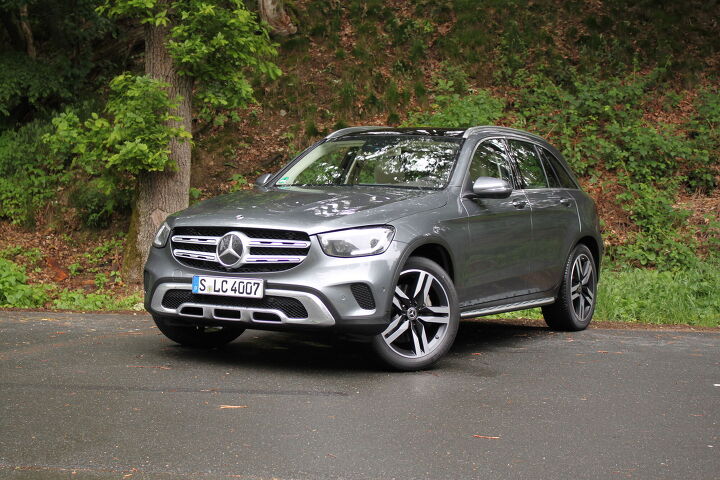

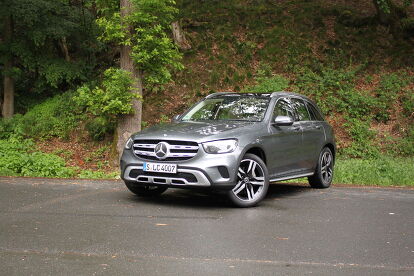




































































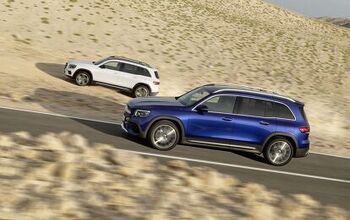


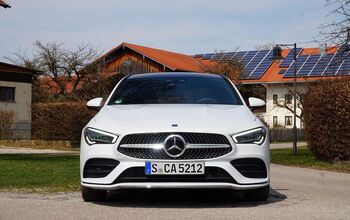

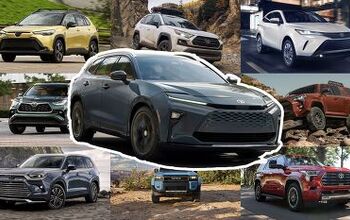







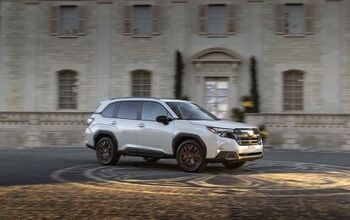
Comments
Join the conversation